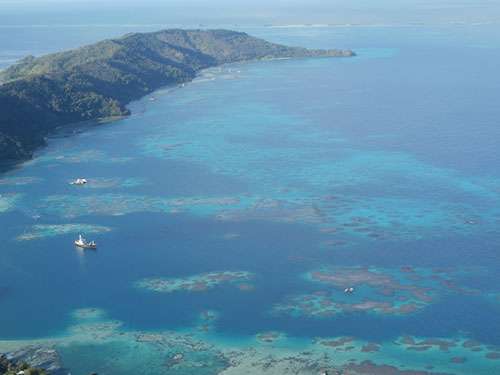Soundscapes offer clues about coral reef communities

Sophie Nedelec and colleagues studied sounds from coral reefs in the Gambier Archipelago, French Polynesia.
They made recordings of ambient noises at 42 reef sites at three different times of day, and compared these to habitat and fish community surveys taken at the same time.
They found that physical characteristics were related to overall sound pressure levels. Reefs were louder when coral cover (including both live and dead coral) was higher, sea state was higher, depth was greater and the bottom was covered by more Porites coral, branched coral and massive coral.
Biological characteristics were more closely related to the number of snaps from snapping shrimp and sound pressure levels at frequencies above 0.63 kHz. These were negatively related to live coral cover and the density and diversity of adult and juvenile fish, but positively related to dead coral cover.
Other than snapping shrimp, sounds recorded included fish vocalisations (produced at low frequencies, around 0.2 kHz), wind and wave noises.
"These results highlight how passive acoustic monitoring could give clues about how habitats under the water might be changing over time," Sophie Nedelec said.
More information: "Soundscapes and living communities in coral reefs: temporal and spatial variation." Mar Ecol Prog Ser 524:125-135 www.int-res.com/abstracts/meps/v524/p125-135/
Provided by University of Bristol




















